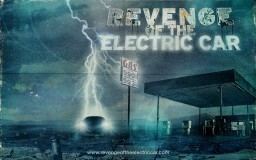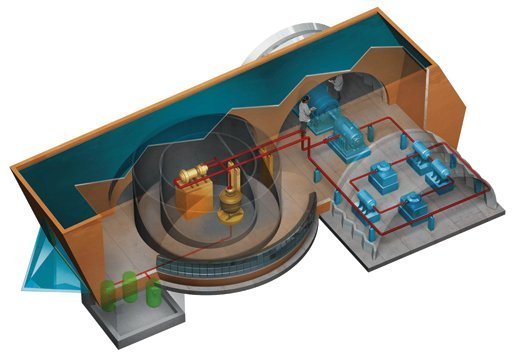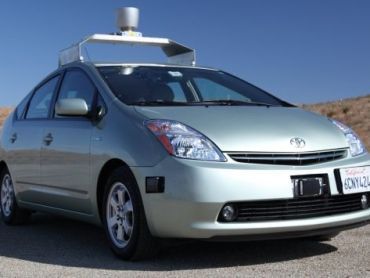Steven Lyle Jordan's Blog, page 69
June 30, 2011
Revenge of the Electric Car (or is it The Empires Strike Back?)
 Last weekend I got the chance to see Revenge of the Electric Car at the American Film Institute's Silverdocs (the movie will have a commercial release in a few months). It was made by the same man who did Who Killed the Electric Car, Chris Paine, and it's focus is the resurgence of the electric car in the auto industry, as well as in the efforts of independent automakers.
Last weekend I got the chance to see Revenge of the Electric Car at the American Film Institute's Silverdocs (the movie will have a commercial release in a few months). It was made by the same man who did Who Killed the Electric Car, Chris Paine, and it's focus is the resurgence of the electric car in the auto industry, as well as in the efforts of independent automakers.
Revenge is as good as Killed, for sure; I'd recommend the movie to everyone. But I have to say that after watching the movie, I had to wonder if the title should have been The Empires Strike Back. My original understanding was that Paine spent a lot of time with a number of independent automakers concentrating on electric vehicles. Yet Revenge ended up featuring the efforts of General Motors to create the Volt, and Nissan's engineering of the Leaf, as well as their joint efforts to assure the rest of the world that they were serious about electric vehicles. It all came off either as disingenuous (GM) or avaricious (Nissan), the auto empires battling for market share at any cost.
GM Executive Bob Lutz gave a particularly stirring performance as a Thurston Howell III-type millionaire, not even trying to pretend he has an ounce of concern for the plight of anything save his bank account. Everything that came out of his mouth regarding electric vehicles dripped of sarcasm and disdain… yet, at the same time, you could see he was going through the motions only because he knew his personal fortune would rise or fall as a result. In the end, he pushed GM to bring a hybrid vehicle, not an electric, to market, and retired from the playing field, apparently upset that he'd be spending his final days on his sprawling ranch with its fish-and swan-filled "pond" (Lutz draws a fairly pathetic-sounding homely out of that pond… cue appropriate audience groans). GM, for all appearances, seems to be doing much the same as the EV1 experiment: Kicking out a car because they feel they have to, but not because they want to, nor because it's right. Everyone who left the showing had the eerie feeling we'd someday be seeing the massive recalls we were introduced to by the previous documentary… by none other than Bob Lutz.
Nissan CEO Carlos Ghosn came out looking much better than Lutz, as he was shown forcing the Leaf through a company that, clearly, barely knew what had hit them. Ghosn presented himself as being certain that the electric car was the car of the future, and that Nissan had to capture that market to assure their future. All the same, Ghosn's priorities weren't with the green factor of an electric vehicle; he responded to it as any business exec would respond to a fad that he thought would make the company piles of dough. Much like Lutz, the only thing Ghosn saw at stake was his paycheck. To his credit, it seemed to be working, and Nissan is today renowned as the only major automaker with a consumer-ready all-electric vehicle. The empire to watch.
Then there was PayPal mogul Elon Musk, the man behind the Tesla Motor Company. Though he's portrayed as an independent, it's hard to see anyone with millions of dollars, a successful internet empire and a new company trying to be the first into commercial space, as a "little guy." Musk risked, and lost, a large part of his fortune in order to build a rich man's toy speedster… and then discovered that he could not support a company on that one uber-expensive electric car. Musk appeared interested, even dedicated, but somehow not very savvy when it comes to creating a car company with cars people will actually buy. He is now faced with converting an operation making $120,000 cars, to one that can make a practical electric sedan at about a sixth of that cost, or close its doors. At the end of the movie, the jury was still out over whether his bid at auto fame would result in the 21st century equivalent of an Oldsmobile… or an Edsel.
Finally, the movie covered Greg Abbott, a man working out of a garage to convert existing cars into electrics. Although it seems "Reverend Gadget" Abbott was making progress with his business, perhaps it was only the very photogenic disaster of a fire in his garage, wiping out his operation, and his difficult but ultimately successful recovery into a new facility, that managed to keep him off the cutting room floor with his fellow independent entrepreneurs. Still, while Musk, Ghosn and Lutz were all seen at the end of the movie, trying to put a brave face on their uncertain futures with electrics, it was Abbott who was finally presented as the hero of the hour, driving around town with his wife in a converted electric car of his own making, and revealing at the end that it got even better mileage on a charge than his own previous estimates, and far better than his corporate competition.
Unfortunately, most of us are left to deal with the GMs and Nissans of the world, the empires that have brought vehicles to market, not because we need them, but because they hope to make a profit off of them. The viewer gets the feeling that the great and noble concept of the electric car has just been co-opted by the money moguls, and that there was no telling how their obvious financial agenda would actually benefit the rest of us in the long run. We know from past experience that these empires are just as likely to abandon electrics, if fortunes don't smile upon them; and we will be at their mercy, just as we were during a certain EV1 episode.
And thanks to Revenge, we now know very little about what alternatives there might be to the empires… after all, no one mentioned a Gadget franchise opportunity.








June 17, 2011
Are we crazy, not switching to thorium-powered nuclear plants?
 This month's Popular Science covers our future in energy (as they are wont to do) with a series of articles on various energy systems that might power our future. In the first part of the article on nuclear power, PS does a good job of describing the next generations of traditional nuclear plants, Generation IV, and how they will be more meltdown-proof than their predecessors (although they don't even try to explain where all the radioactive waste is going to go).
This month's Popular Science covers our future in energy (as they are wont to do) with a series of articles on various energy systems that might power our future. In the first part of the article on nuclear power, PS does a good job of describing the next generations of traditional nuclear plants, Generation IV, and how they will be more meltdown-proof than their predecessors (although they don't even try to explain where all the radioactive waste is going to go).
However, the second part of the same article describes another type of nuclear reactor, a Molten Salt Reactor (MSR), powered by thorium instead of uranium, and goes on to list its plusses compared to traditional uranium-powered plants. (For details, see the article.) In a nutshell:
MSR is a tested design, actually built and run for 22,000 hours without a problem;
MSR reactors use very simple means to shut down the reaction in the event of a problem, making it more meltdown-proof than any other existing reactor design;
Thorium is four times as abundant as uranium and is easier to mine, in part because of its lower radioactivity;
One pound of thorium produces as much power as 300 pounds of uranium–or 3.5 million pounds of coal;
Thorium is 99% burned in a nuclear reaction, compared to 3% of uranium, creating significantly less waste;
Thorium is not fissionable after use in a reactor, making it useless for weapons;
Thorium waste radioactivity lasts a few hundred years, versus uranium's tens of thousands of years.
Which begs the question: Why aren't we switching to thorium plants? Are we insane?
The PS article suggests that, because no actual MSR power plants are actually running, the U.S. has no regulations in place for them, and as a result, no one is likely to want to build one. Well, everything has to start somewhere, and as thorium-run MSRs can be very small and produce power for local uses, replacing existing plants of all kinds with small local thorium-run MSRs would seem to be a smart move. I can think of a location right off: Washington, D.C., to replace the Capitol Power Plant that powers the Capitol building and Congress' chambers. If one can be placed there, and prove its worth to the federal government in daily use, it would pave the way for others nationwide.
Thorium-based MSRs, being safer in the event of catastrophe, are natural choices for areas of the world where climate or natural disasters like earthquakes threaten the operability or safety of traditional uranium-based plants. They are designed to be a smaller reaction, and do not operate under pressure, making an explosive accident unlikely, and making containment easier. After the recent accident at Fukushima, and past accidents at Chernobyl and Three Mile Island, the public needs to know that nuclear reactors can be made much safer than their predecessors… and MSRs are it.
And finally, the risk of waste material is significantly lessened, as less waste is generated by the plants, and remains radioactive for a much shorter time, making storage and disposal a more realistic prospect than burying uranium in facilities that must remain isolated and secure for longer than civilization has existed on Earth… by a factor of ten.
The amazing thing is, thorium-based MSRs were originally experimented with in the 1960s! With all of the safety and security problems inherent in uranium-based traditional nuclear plants, and the desperate need for cleaner energy and a reduction of carbon pumped into the atmosphere… one can only ask: What the ever-lovin' hell are we waiting for?








June 14, 2011
Internet Archive archives digital texts… on paper. WTF.
 The Internet Archive reports on its blog that it is concerned about the original copies of books being digitized for libraries and other institutions being discarded or moved to "off site repositories" when they are returned. Their solution is to take these original books and archive them for future use:
The Internet Archive reports on its blog that it is concerned about the original copies of books being digitized for libraries and other institutions being discarded or moved to "off site repositories" when they are returned. Their solution is to take these original books and archive them for future use:
A reason to preserve the physical book that has been digitized is that it is the authentic and original version that can be used as a reference in the future. If there is ever a controversy about the digital version, the original can be examined. A seed bank such as the Svalbard Global Seed Vault is seen as an authoritative and safe version of crops we are growing. Saving physical copies of digitized books might at least be seen in a similar light as an authoritative and safe copy that may be called upon in the future.
While I applaud Internet Archive's dedication to archiving and storage of backup material, I say they're taking a step backward here. You don't preserve backups of microfiche newspaper articles by saving the newspapers. Likewise, storing digital documents on paper is wasteful and energy/storage-demanding; a single hard drive could save everything in those shipping containers depicted above (not to mention the headache of accessing a single book stored therein).
What the IA ought to be doing is working to improve and use digital storage and backup systems. Yes, they are not perfect as-is; but considering how easy it is to back up a single hard drive in multiple redundant systems, all of which can be designed to cross-check each other to eliminate "electron-flipping," you could accomplish the same thing with just four drives placed in four safe sites. Want to be safer? Try eight drives.
Let's face it: Paper is far from the perfect storage medium, as those shipping containers ably illustrate. Let's be sensible about archiving and storage, and not let romanticism over paper lead us astray.








June 6, 2011
Photovoltaics Meet Aesthetics (Finally)
 A recent press release from Qsolar describes a new photovoltaics product line: Kristal Rainbow, a series of photovoltaic panels that come in blue, red, purple, green, grey/green and grey/brown. The Building-integrated Photovoltaics (BIPV) product is designed for buildings and houses that incorporate photovoltaics into the design of the structure, rather than using them as "bolt-on" devices that can detract from an attractive design.
A recent press release from Qsolar describes a new photovoltaics product line: Kristal Rainbow, a series of photovoltaic panels that come in blue, red, purple, green, grey/green and grey/brown. The Building-integrated Photovoltaics (BIPV) product is designed for buildings and houses that incorporate photovoltaics into the design of the structure, rather than using them as "bolt-on" devices that can detract from an attractive design.
Presently there are only a few BIPV products on the market, and most of them aren't doing brisk sales because of higher costs—and solar cell costs are already high enough to keep most consumers and builders out of the market. But as prices come down, more consumers and builders are realizing that attractive design does not have to exclude solar, nor does solar automatically ruin an attractive design with ugly scaffolding and clashing surfaces.
This is a sign that solar is finally coming into real mainstream use: Previously, cost, efficiency and practicality were the only factors involved in choosing and using solar panels; now, costs are dropping, efficiency is increasing, and practicality is a given, so aesthetics are beginning to play a larger part in selection. And as aesthetics improve across one sector of alternative energy, so it should improve in other areas. All of this increased aesthetic will in turn draw more people into using alternative energy products that they can show off to neighbors (when being more green than your neighbors, or protecting the planet, just isn't good enough).
Many products and product lines go through the same evolution, starting as ugly-but-functional, improving modestly over time, then experiencing a sales resurgence when attractive design and aesthetics are finally integrated into the product.
It may not be ideal to assume that efficient energy systems must be pretty to be sold; but the most important thing in this case is that are are sold, to decrease our dependence on dirty and politically-problematic energy sources. If colored solar panels turn out to be the home fashion accessory of the future… so be it.








May 24, 2011
Review: Mindflight by Stephen Goldin
My rating: 4 of 5 stars
Political espionage and mind-reading: Sounds like either a really good story… or a dog. But Goldin puts together a great yarn about a great telepathic spy, Alain Cheney, who discovers that his medical condition, one that eventually befalls all telepaths—the aptly-named "telepause"—has doomed him to a "forced retirement"… with extreme prejudice. Just at the time when he should be heading an investigation to penetrate a secret project on his assigned planet, Cheney finds himself on an internal hit-list instead. But he doesn't plan to wait for the slaughter.
What follows is Cheney's flight from his former-allies-turned-executioners, while hoping he can find a way to extend his life beyond the expected madness and death caused by telepause, and incidentally, to leave a positive mark on the world before he goes.
Unlike many authors, Goldin does a great job handling the concept of telepathy without making it seem hokey. He also spins an exciting, thrilling and believable tale of a spy's valiant efforts to stay alive, and the help and hindrances he meets along the way.
Throughout the book, the characters seem very real, not super-heroic or infallible, and the situations don't stretch the bounds of acceptance. The story does take place across a series of worlds, including Earth, where FTL travel isn't an issue, and an alien race exists outside of the human worlds; but if you don't have a problem with the idea of telepathy, you should be okay with overlooking lightspeed travel and aliens.
Overall, an excellent tale that has convinced me to check out the sequels in the series.








May 23, 2011
Magazines are finally helping to sell ebook devices
 A New York Times article recently pointed out that Barnes & Noble's Nook Color is enjoying healthy sales, and that quite a lot of the content being sold for it is in the form of women's magazines. The article continues by pointing out that, according to a recent study, women outbuy men in reading material by 3 to 1, and that publishers have been surprised and encouraged by the volume of magazine sales on the NC (as I like to call the device… sorry, but "Nook Color" just doesn't roll off my tongue). And the article compares the device's popularity with the iPad, the other device through which publishers like to sell their magazines, but which is not doing as well in magazine content as the NC.
A New York Times article recently pointed out that Barnes & Noble's Nook Color is enjoying healthy sales, and that quite a lot of the content being sold for it is in the form of women's magazines. The article continues by pointing out that, according to a recent study, women outbuy men in reading material by 3 to 1, and that publishers have been surprised and encouraged by the volume of magazine sales on the NC (as I like to call the device… sorry, but "Nook Color" just doesn't roll off my tongue). And the article compares the device's popularity with the iPad, the other device through which publishers like to sell their magazines, but which is not doing as well in magazine content as the NC.
None of this is surprising to me… in fact, it often amazes me that we hadn't seen this growth much sooner. Over the last few years, the ebook world has primarily concentrated on books, which are mostly or exclusively text-based documents. One thing about text: It only needs good contrast to read, and it sure doesn't need color. Hence, the many black-and-white ebook devices on the market.
But the black-and-white devices were effectively shutting out a major sector of the publishing market, one that has proven to be strong and steady even in the worst economic times, and one which is tailor-made for the digital era: Magazines.
Magazines, or periodicals, are the unsung product of publishing; part of our daily landscape, ubiquitous and ever-present. But they're flashy and colorful, they're targeted at niche markets, they come out on predictable schedules, and they encourage enthusiasts to basically preorder them through discounted subscriptions… the ideal publications product, regular and predictable. Most bookstores have magazine racks prominently placed in the front of the stores for easy access. Stores that do not sell books at all, often sell magazines; you'll find them at drugstores, coffee shops, delis, transportation centers and specialty stores (because almost every specialty has a corresponding magazine). Many people who never read books, regularly read magazines, and often have subscriptions to them. Right now, four of my five magazine subscriptions are digital and read on the NC.
The potential for magazine profits has always been a good one, especially with the most popular subjects (news and commentary, self-improvement, glamor, celebrities, sports, and of course, sex). Magazines in these areas, and many more besides, enjoy a consciously locked-in audience through subscriptions, plus sales generated by the occasional viewer that is attracted by the colorful cover or interesting blurb. They are steady money-makers, only requiring freshened content for each issue… the need to reinvent the wheel every month does not exist for magazines.
With all of this going for it, the magazines was perfectly placed to take advantages of the perks of the digital medium: No printing or transportation costs; instant delivery; high-quality displays; malleable display options; and converting storage from massive shelves or heavy boxes to postage-stamp-sized chips.
I've always believed that the first devices to truly embrace the digital magazine would take off. I envisioned magazine readers that would automatically download subscribed high-resolution full-color magazines and manually download magazines selected at a store or online. It would allow the owner to read an entire magazine, then save or delete it; or, they could select parts of the magazines they wanted to keep, move those sections into customized folders–sort of a digital "scrapbook"–and delete the rest, or store them elsewhere for future reference. Imagine being able to save articles of your favorite subject or celebrity, to recall at any time. And that device would be portable enough to take with you essentially anywhere you wanted to go.
The PC solved all of these items except portability. With the introduction of the iPad, its portability and quality color screen, digital magazines had a better platform (though Apple's App Store left much to be desired). With the Nook Color, and its equally-quality screen and improved buying experience, the digital magazine platform has improved even more.
Publishers now have the opportunity to convert many magazine readers to digital devices and subscriptions that will bring in regular income, more reliably than book sales (since books are all different, and there's no guarantee someone who read last month's book will want to read next month's book). Despite the NYT article's suggestion that women will dominate purchasing thanks to magazines, men and women will enjoy the magazine content of their choice and drive the sales of digital devices. If we can believe the statistics, this is already happening, and at a rate that may rival the print-to-digital conversion rate of books before too long.
Magazines may well prove to be the content that brings the non-book-reader into the 21st century of digital publications.








May 13, 2011
Review: The War of the Worlds
 The War of the Worlds by H.G. Wells
The War of the Worlds by H.G. Wells
My rating: 5 of 5 stars
War of the Worlds is notable and significant on many levels; not only in its introduction of intelligent and malevolent aliens, bent on conquest for unknowable ends (which Wells based on reports of English invasions of aboriginal regions for resource control); but in its point of view of the "regular Joe," the man who is not part of the elite, not pressed into trying to attack a superior foe, but whose only concern is to get the heck out of harm's way.
We are therefore presented with a story that forces us to guess what might be happening elsewhere, as the only thing we know for sure is what is happening to our helpless central character… and considering the horrors he witnesses, we can only assume the worst for humanity outside of his relatively small sphere of influence.
In this way, I admit to being one of those who preferred the 2006 movie adaptation of WotW, as it was much closer to the spirit of the original novel, and did not try to turn the central character into a Rambo that would somehow, single-handedly, save the world from invasion.
The story follows along with the main character as he relates his experiences under the relentless Martian onslaught, and the reader becomes a fellow refugee, left wondering how any of it could possibly end well. As a result, the final resolution has that much more power and significance… while at the same time, leaving the ultimate question open-ended: Could this all happen again? It makes the individual feel somewhat smaller in the universe, less sure of his dominance in nature.
In fact, this was one of the very first novels that made us look to the sky, and fear what we might meet up there. It has, therefore, been largely responsible for generations of alien invasion scenarios and more evil alien monsters than we can count. It is perhaps best-known for this, which is a shame; for the revelation of man's place in the universe would've been a much better message to lodge in the world's psyche. Perhaps, given time, Mankind will figure out what was really important about this story, and finally take that message to heart.








May 12, 2011
Review: Beggars In Spain
 Beggars in Spain by Nancy Kress
Beggars in Spain by Nancy Kress
My rating: 5 of 5 stars
A favorite book, and series, of mine: Beggars goes into such wonderful depth and unique directions, regarding the future of genetically-altered humans, that it almost felt like I was reading the only book that had really considered the subject.
The characterizations were strong and well-rounded; there were no good or bad guys, only people whose motivations were clear and understandable. There is an overlying theme of those who just want to fit in, to find their place in the world, often regardless of others' intentions for them… to me, everything in the story took a back-seat to that central theme. And of course, the book explores the definitions and boundaries of being human, and what it means to be considered different. The science was very believable, nothing really straining the bounds of possibility. Strong characters; human-centric theme; believable science; how can you beat that?
In short, an excellent read, the kind of story I'm always looking for. If you read this, you must continue on to Beggars and Choosers, and Beggars Ride.








May 11, 2011
How about a self-driving car in your future?
 Some of you are probably aware that Google has been testing a self-driving car on California streets since last year. (Check out a few videos if you're interested.) They believe they have progressed far enough in their tests that they have gone to the Nevada legislature to legally allow their cars on Nevada roads… and that they earn an exemption from the law prohibiting texting while driving.
Some of you are probably aware that Google has been testing a self-driving car on California streets since last year. (Check out a few videos if you're interested.) They believe they have progressed far enough in their tests that they have gone to the Nevada legislature to legally allow their cars on Nevada roads… and that they earn an exemption from the law prohibiting texting while driving.
There's nothing new about the concept of the self-driven car; science fiction has been toying with them for decades, of course. But with the latest in sensor systems being applied to digital roadmaps and image recognition technology, cars are learning to recognize roads and hazards and direct themselves. As a 2010 NY Times article put it: "Robot drivers react faster than humans, have 360-degree perception and do not get distracted, sleepy or intoxicated."
I'm not sure whether the Google car is really ready for prime time, but I do think it's a step in the right direction.
It's no secret that automobiles are responsible for more deaths in the United States than any other single influence, including heart attack, cancer and manslaughter, intentional and unintentional. A major reason is the sheer amount of input while driving a car in our ever-congested cities and highways, something most of us can handle when the level is low, and we are at our best… but that can easily overwhelm us if the input is high, or we are not at our best. And by "at our best," I mean not under the influence, not physically ill, not driving irresponsibly, and not distracted by other things.
Distraction is a major issue. There are so many things that can drag our attention away from our driving, from fiddling with the radio, to eating, phone-calling, doing our makeup, disciplining the kids in the back seat, checking the map for your destination, rubber-necking that accident across the street, or checking out the cute jogger on the sidewalk. Presently, laws are being written and rewritten to minimize the number of distracting things you can do while driving.
But if you think about it, it makes even more sense to find a way to eliminate the single most dangerous part of those tasks—driving—from everything else you do in a car. In fact, it's a wonder that people aren't demanding self-driving cars, so they can get where they need to go and continue to do all the things they want to do en route.
I am one of those people who believe that, eventually, car driving will be handed over to the vehicles themselves for more than 99% of driving duties. Self-driving cars will be better able to handle heavy traffic and rush-hour duties, probably organizing themselves into strings of "auto-trains" that will travel mere inches apart, communicate with each other to coordinate speed and lane-changes, and select the best routes based on live traffic data. As sensors improve, they will be able to drive on any road, even dirt, and be able to negotiate driveways and parking lots with ease. We may eventually see vehicles drop you off at your destination, then go and park themselves, and later return to the curb when you call for them (the valets are gonna hate that).
Most importantly, we will see far fewer accidents and fatalities, and fewer people stressed about car travel, because they can concentrate on anything and everything except the stress of driving the car.
Needless to say, such a sea-change from manually operating a motor vehicle to allowing it to drive itself will take time. Those who feel they can drive their own cars, or who distrust automation to drive as well or as safely as they can, will resist the idea of self-driven cars, even when presented with clear evidence that their perception of their own driving prowess isn't what they think it is.
Fortunately, they are not the only people on the roads: We may see those who cannot drive themselves, like the elderly or disabled, take up the initial use of such vehicles, providing a public demonstration of how well the cars work; we may see cars that drive teens and younger about, completely on automatic, freeing parents from chauffeuring duties (and incidentally saving more of our teens, who are most at risk for accidents due to driving inexperience); and others who prefer being chauffeured around, just because, may buy into self-driven cars to enjoy the benefits of automation.
As these groups and others try out self-driven cars and eventually prove their worth, we may eventually see the public, and the government, deciding that using a manually-driven car is too dangerous for public areas, when there are workable and safer alternatives available; and laws could eventually follow, joining the seatbelt laws and drunk-driving statutes as the natural next step for driver and public safety. Some may feel they are being forced to accept a lack of control over their driving, and there will surely be outrage every time a self-driven car fails (which they will, we know); but the expected drop in accidents and fatalities will likely serve to quiet the naysayers, or to harden others against their complaints. And as more self-driven cars enter the roads, adding a greater measure of predictability (another major hazard to other drivers) to traffic patterns, safety levels should increase even more.
Google's car is the next step in ushering in this next logical step of driving, bringing safety back to our roads, and allowing people to continue the activities of their lives, even as they travel from place to place. We may not have reached that point yet… but we're getting there.








May 8, 2011
Media catches up to the myths
 I just came from seeing the movie "Thor" this afternoon. Being a superhero fan from way back, watching the characters' transition from comic books to live action on the big screen always fascinates me.
I just came from seeing the movie "Thor" this afternoon. Being a superhero fan from way back, watching the characters' transition from comic books to live action on the big screen always fascinates me.
Witness "Thor," which featured quite a lot of action taking place in the otherworldly realms of Asgard and Jotuheim (the homes of the Norse Gods and the Frost Giants, respectively). To say that Asgard looked like the penultimate Realm Eternal is like saying that Miss Universe is pretty… it was jaw-droppingly beautiful, went on for miles and miles, and was placed in the most incredible celestial backdrop ever conceived by man.
There were creatures as well, including the fire-breathing Destroyer (as seen on TV) and the sort of junior-Craken monster in Jotuheim. We've seen similar creatures in other movies, but the level of realism captured by computer graphics is amazing… just a decade ago, such effects creatures wouldn't have been nearly as believable.
And, of course, the battles: Superhero-worthy impacts that would shatter the bones of ordinary mortals, and create thunderclaps of released energy that would flatten buildings. All incredible. And all thanks to computer graphics (and a lot of massaging by very human operators and artists).
As I came out of the movie (which I thoroughly enjoyed), I thought about the irony of superhero movies: Brightly-costumed superheros are the myths of the 20th century, beginning with Superman in the 1930s and developing forward; all of the characters who are getting big budget movie treatments are characters that had the height of their popularity in the 20th century; yet it took 21st century computer graphics effects to finally give them the power and spectacle that the characters needed to look good on the silver screen. They may be late to the party, therefore… but they were worth the wait.
This makes me think about myths… specifically, what will be the predominant myths of the 21st century? The superhero, the costumed vigilante, the robot, among the most prevalent of 20th century myths, have at their cores a significant connection to science and the industrial revolution (Thor, of course, being a notable exception; and which it can be speculated would never have been made a movie if the character was not a major part of the other 20th century myth, the Superhero Team… in this case the Avengers, whose movie is due out next year).
It can be argued that we haven't completely left the Industrial Revolution behind; but we are looking at it in a different way, as the IR has proven to be very hard on ecosystems, and we are becoming increasingly more desperate to find ways to reverse much of its effects on the environment. Science is the primary tool we have been applying to reversing said effects, so we haven't left science behind either. Should we expect a 21st century dominated by these same tropes? Unless we suffer a complete societal breakdown and the beginnings of the next dark age, it seems likely that we will.
But as the new century turns, we are realizing that science and technology may not be the answer to everything that we assumed it was in the 20th century. We may see nature taking on a greater emphasis in our daily lives, or a need to bypass technology and depend more on self-reliance to solve problems. Whether or not society breaks down some day, we can expect a resurgence in the concepts of nature and self-reliance over science and technology, or at least in a more balanced partnership.
Another change we've seen in the new century is the new dynamic created by the web and various "social media" to bring groups together—both disparate groups, and larger collections of like groups. In the 20th century, the bad guy was usually vanquished by the lone hero, or a small group of heroes working together. Perhaps the 21st century bad guy will be taken down by flash mobs and organized denial of service attacks.
And what might be coming up in this century that we haven't anticipated? Might some unexpected man-machine interface surface, or perhaps a significant alteration to evolution, or a new skill that transforms individuals into something… not quite human? There may be signs of the change around us right now, or it might yet arise from some unexpected source.
As a writer, naturally I hope to be the one to discover the 21st century's hero archetype and develop a story for it (preferably before anyone else). But even if someone else should discover it first, I look forward to stories about it, and I hope I'll be involved.












